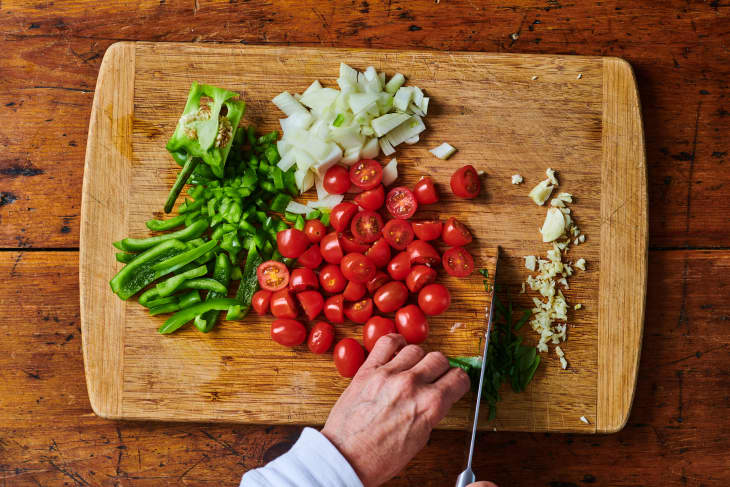Have you ever found yourself pondering what is the hole in a cutting board for? You're not alone! Even seasoned chefs and kitchen professionals might have overlooked the purpose of this intriguing design feature. While cutting boards are essential tools for food preparation, the hole often goes unnoticed. In this article, we will delve deep into the *mysteries* surrounding this hole, explore its practical applications, and uncover how it can benefit your cooking experience.
First, let's note that the hole in cutting boards isn't just an aesthetic choice. It serves several functional roles that can significantly improve efficiency and ease in the kitchen. Understanding these functions might just change the way you view your trusted cutting board.

The Functionality of the Hole
Many cutting boards come equipped with a hole, which is often located at one end of the board. This simple design can serve multiple functions:
- Hanging Storage: One of the primary purposes of the hole is to allow for easy hanging. When not in use, you can simply hang your cutting board on a hook or a peg. This not only saves space but also ensures that your board is easily accessible whenever you need it.
- Draining Excess Liquids: The hole can also be advantageous when dealing with wet ingredients. If you are slicing fruits or vegetables that release juices, the hole allows excess liquids to drain away rather than pooling on the board.
- Transporting Food: The hole can assist in transportation. When your board is stocked with chopped vegetables or meats, you can easily hold the board over a pot or bowl, allowing the food to slide into the desired container without hassle.
Versatility of Cutting Boards
When it comes to cutting boards, versatility is key. A well-chosen cutting board can serve multiple purposes in the kitchen. Many kitchen professionals opt for different types of boards for various tasks, such as:
- Wooden Cutting Boards: These are often preferred for their aesthetic appeal and natural properties. They are gentle on knife edges, making them ideal for slicing and chopping.
- Plastic Cutting Boards: Easier to clean and commonly used for raw meats, these boards are essential for maintaining food safety.
- Composite Boards: Combining the best features of wood and plastic, composite boards allow for flexibility without sacrificing quality.
How to Properly Maintain Your Cutting Board
Now that we know more about what is the hole in a cutting board for, it's also essential to consider how to maintain your cutting board to prolong its lifespan. Here are some tips:
- Cleaning: Always wash the board with warm, soapy water after use. For tougher stains or odors, consider using a paste of baking soda and water.
- Oiling: Regularly oil your wooden cutting board to prevent it from drying out and cracking. A mineral oil or board oil can work wonders.
- Avoiding Warping: Keep your cutting board flat and store it in a dry place. Check out this guide on cutting board warping for more tips.
Common Questions
1. Can I use the same cutting board for meat and vegetables?
While it is possible, it's recommended to have separate cutting boards for raw meat and other foods to prevent cross-contamination.
2. How often should I replace my cutting board?
Monitor your cutting board for any deep grooves or cracks. If these are present, it's time for a replacement.
3. What materials should I avoid in cutting boards?
Avoid soft plastics that can retain bacteria, and be cautious with cutting boards that do not offer a non-slip surface.
The Benefits of Optimal Cutting Board Use
Using cutting boards correctly not only enhances the culinary experience but also upholds kitchen safety standards. Understanding what is the hole in a cutting board for is just one aspect of realizing the full potential of kitchen tools.
By investing time and resources into choosing the right board and maintaining it, professionals can elevate their cooking game significantly. Furthermore, considering the aesthetics of a cutting board can bring visual appeal to your culinary space.
Integration into Daily Cooking
The hole in a cutting board likewise reminds us to integrate functionality into our daily cooking routines. Whether hanging it up for easy storage or draining excess moisture, this feature makes a valuable addition to your kitchen tools.
For additional insights on caring for your cutting board, check out this article on cutting board maintenance.

Conclusion
In closing, the question, what is the hole in a cutting board for, opens the door to a satisfying exploration of kitchen utilities. By embracing the design features of these boards and understanding their practical applications, kitchen professionals can navigate their culinary tasks with greater efficiency.
So next time you reach for your cutting board, take a moment to appreciate its thoughtful design and functionality - including that small, yet significant hole!
As an Amazon Associate, I earn from qualifying purchases.


























